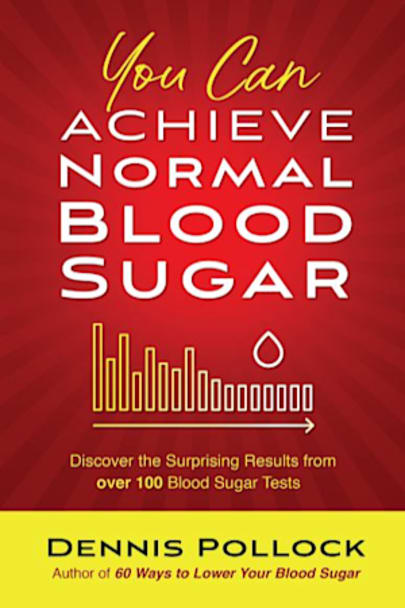Discover the Secret to Successfully Manage Your Blood Sugar If high blood sugar is something you struggle with, chances are you’ve been overwhelmed by the wealth of well-meaning information you’ve heard from doctors, nutritionists, and other sources. Isn’t it time to put the theories to the test and determine once and for all how to get your numbers back to normal? That’s exactly what bestselling … exactly what bestselling author Dennis Pollock did. And the results of well over 100 blood sugar tests he conducted for this book, further backed by brand-new research and real-life stories, will give you the answers you’ve been searching for.
In addition, you’ll learn why, how, and when to test, the importance of reading food labels, helpful guidelines for weight control and general nutrition, and so much more.
For the first time in your diabetic journey, you will finally be able to experience what it feels like to know that maintaining normal blood sugar isn’t just possible, it’s entirely achievable.
more



I have mixed feelings about this book. The author writes about trying different foods and testing his blood sugar to see how it is affected. Much of it is based on low-carbohydrate foods and which ones affect him most and which he can eat without raising his blood sugar too much. It is important to note that he isn’t a medical doctor and what works for him, may not be right for you. However, he does make some interesting observations and points that might be helpful to some people.
I voluntarily reviewed a complimentary copy from NetGalley. All opinions are my own.
Unlike many diet and heath books, this one isn’t written by a medical doctor. Nor does the author make any claims of his methods being the One True Way to cure yourself from diabetes—something I have seen in other books, and which never makes sense. Surely if there was One True Way to manage diabetes, the medical establishment would have discovered it by now.
Instead, Dennis Pollock takes us through his personal journey of discovery—what has worked for him to reduce his blood sugar levels to mostly normal, how he has learned what foods cause blood sugar spikes for him.
That is a key point: this book is what works for him. He has undertaken dozens and possibly hundreds of food experiments, comparing one food against another in terms of the affect it has on his blood sugar. He has also occasionally tested others (usually his wife, but sometimes his cameraman or someone else) and found they have different results.
As he points out:
What makes a diabetic a diabetic is their inability to process carbs and sugars the way normal people do.
This is why normal people (including his wife and cameraman) can eat foods he can’t: because their bodies are better at processing carbohydrates than his. However, many of the foods we consider normal (such as bread, potatoes, rice, and pasta) cause elevated blood sugar levels in normal people as well, suggesting we’d all do well to avoid overlarge portions.
Pollack’s central idea is nothing new: the idea that eating carbohydrates (and especially sugar) is bad for our overall health has been around since the 1950s. But the American health establishment ignored the low-sugar, low-carbohydrate diet promoted by British researcher John Yudkin (and others), and instead told us fat was the dietary evil.
Fat might be bad for some people, but Pollack’s personal research shows that eating protein and fat has negligible effect on his personal blood sugar levels. But eating carbohydrates—especially carbohydrates alone, without fat or protein—causes massive blood sugar spikes. And there are scientific reasons behind this, which he explains in everyday language. That is the strength of this book: it’s not written in medical language. It’s written so the average person can read and understand it.
You Can Achieve Normal Blood Sugar is written for people who have received a diagnosis of Type 2 diabetes or prediabetes, and I do recommend it. I’d also recommend it as a good read for family members and those who plan meals or cook for Type 2 diabetics.
Thanks to Harvest House and NetGalley for providing a free ebook for review.